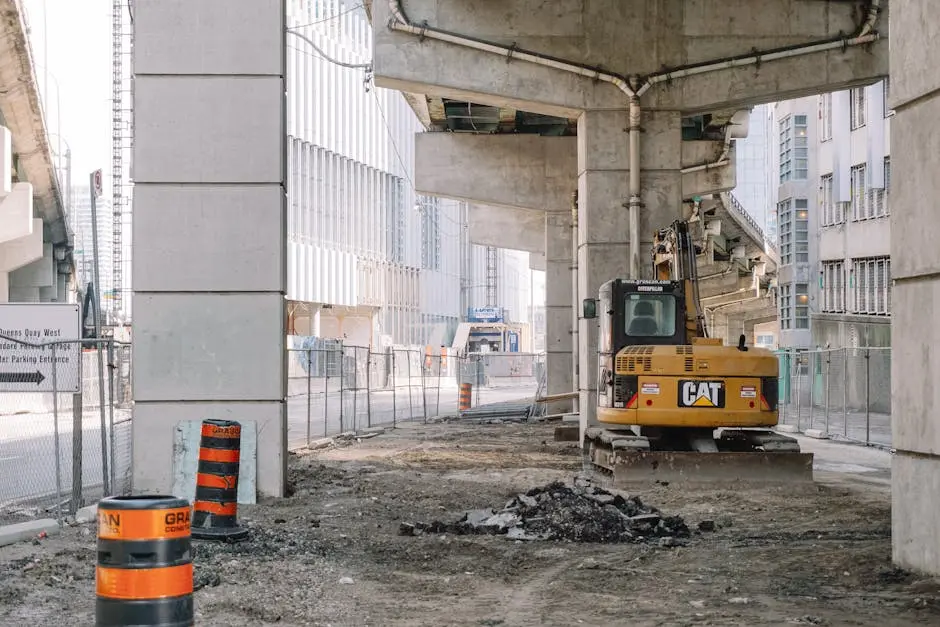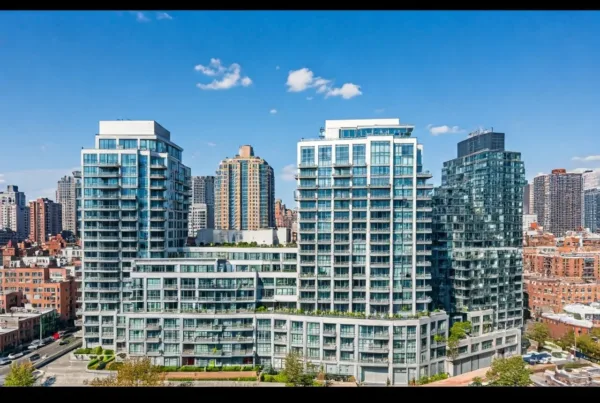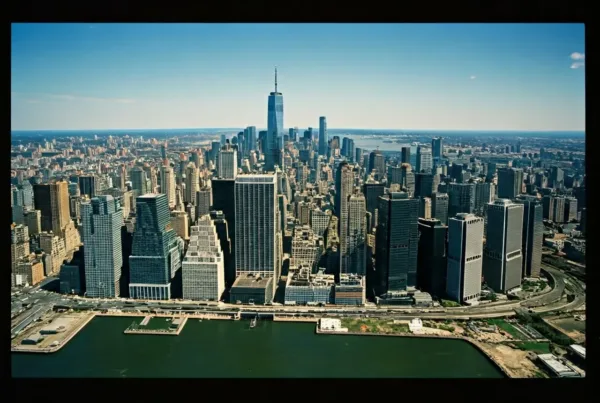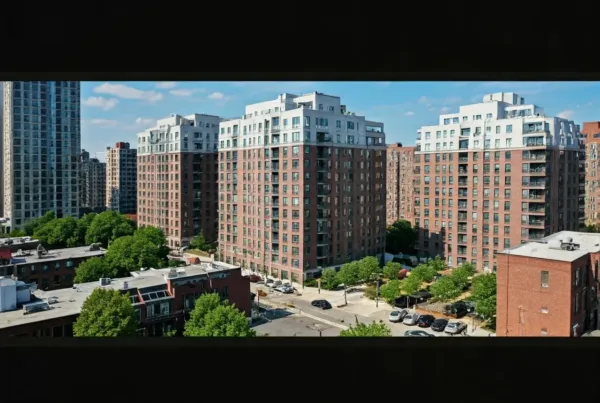The construction industry is constantly evolving with new trends and technologies. In this blog, we delve into the latest construction trends through expert analysis, highlighting the innovations shaping the future.
The Rise of Green Construction
As the dawn of the 21st century marks its third decade, the landscape of construction is being painted green. The rising urgency for eco-friendly practices is pushing builders to rethink traditional methods. Green construction isn’t merely an optional trend; it is becoming the standard across the globe. With its foundation resting on sustainability, this construction trend advocates for using recycled and renewable materials to minimize environmental footprints. Experts have been vocal about integrating these sustainable materials into building designs, which not only reduces environmental impact but also drives economic benefits through energy efficiency. This shift is seen across various projects, showcasing that green buildings often appeal to environmentally-conscious buyers, thereby enhancing property value.
The push for green construction extends beyond materials to include comprehensive designs aimed at reducing energy consumption. Features such as solar panels, green roofs, and rainwater harvesting systems are becoming mainstays in modern architecture. An expert analysis suggests that these energy-efficient practices significantly lower operating costs while promoting a healthier indoor environment. This is illustrative of a larger movement within the industry, where builders are now expected to demonstrate their green credentials. The shift towards sustainability aligns with significant global initiatives aimed at reducing carbon emissions, thus contributing robustly to the fight against climate change.
In urban metropolises, green construction is more than an environmental choice; it’s a hallmark of innovative city planning. Take, for example, the vibrant cityscape of Hudson Yards in New York City, where new structures harmonize urban living with the natural environment. Here, the application of expert insight in green architecture not only supports sustainable development but also encourages community engagement. By embracing the principles of green construction, urban developers can create resilient infrastructures that thrive amidst the growing challenges of climate change. When examined closely, these developments reveal that the trend is not just favored for its ecological benefits—it also offers considerable financial advantages, drawing increased attention from investors and developers worldwide.
Innovative Building Technologies
Innovation in construction technology is reshaping the realm of possibilities within the industry. Leading this wave is the advancement of 3D printing and prefabrication, technologies that offer precision, speed, and cost-efficiency. Experts forecast that 3D printing, with its ability to fabricate complex components on-demand, is set to revolutionize how structures are conceived and realized. This technology dramatically cuts waste and accelerates construction timelines, seizing the interest of developers looking to capitalize on sustainable and cost-effective building solutions.
Moreover, these cutting-edge technologies don’t stop at construction phases. Prefabricated building modules, increasingly popular due to their streamlined production, offer a glimpse into the future of building. These modules champion sustainability by reducing material waste and allowing for construction in controlled environments, enhancing quality assurance. Expert analyses show that through prefabrication, the construction timeline is shortened while maintaining flexibility in design. This efficiency caters especially well to urban areas struggling with housing shortages, offering viable solutions to meet the demand quickly and efficiently.
Beyond construction processes, digital technologies like Building Information Modeling (BIM) create comprehensive digital representations of building designs, facilitating seamless collaboration among stakeholders. This technology minimizes risks by identifying potential conflicts and allowing modifications before physical resources are utilized. The result is a more coordinated and error-free construction phase, underpinned by accurate data and predictive analytics. As we’ve seen, technology-driven approaches in construction not only enhance building accuracy but also improve safety and reduce costs, making them essential tools for modern development efforts.
The Role of Smart Buildings
Smart building technology is no longer a futuristic concept—it’s becoming the new norm in modern construction. At its core, smart building integration involves the use of advanced automation systems to enhance building performance, energy efficiency, and user comfort. Acknowledged by experts, this integration allows for real-time data analytics to optimize everything from lighting and temperature to security systems, providing unprecedented control over building environments. The repercussions of these technological advances are multi-fold, driving the construction industry towards a more sustainable and user-centered paradigm.
A critical aspect of smart buildings is their role in energy management. By using sophisticated sensors and IoT technology, these structures can balance energy consumption with actual usage needs, drastically reducing wastage. This not only aligns with sustainability goals but also offers significant cost savings for occupants. Experts have identified that such energy-efficient functions attract tech-savvy consumers and environmentally conscious organizations, reinforcing the appeal and viability of smart buildings in the urban landscape.
User experience is also significantly improved with the emergence of smart buildings. Features such as adaptable climate controls and automatic lighting adjustments contribute to a comfortable living and working environment. These enhancements cater to modern lifestyles, where seamless integration of technology into daily life is valued. Smart buildings are transforming from luxury offerings to essential real estate choices, indicating a strategic shift in construction priorities where maintaining a balance between cutting-edge technology and environmental responsibility becomes key.
Urbanization and Modular Construction
As urban centers continue to sprawl and populations grow, the construction industry is turning to modular construction as a viable solution. This trend addresses the need for rapid, scalable building projects, particularly in densely populated areas. Modular construction’s primary appeal lies in its efficiency—pre-assembled modules are transported to the site, minimizing on-location labor and material waste. Expert analysis has confirmed that this approach not only shortens project timelines but also maintains high construction quality, a boon for developers in bustling urban environments.
Modular construction facilitates rapid urban development, allowing cities to address the pressing housing crisis with speed and flexibility. The ease with which modules can be customized and assembled is indicative of a shift towards adaptable development solutions. According to experts, this trend promotes urban resiliency, enabling cities to expand and contract more fluidly in response to demographic changes. Despite the advantages, modular construction faces challenges related to logistical complexities in transporting and assembling modules, as well as ensuring structural integrity across diverse environments.
In addition to speeding up construction times, modular building offers a substantial environmental advantage. The controlled factory setting for module assembly significantly reduces construction waste and energy consumption, contributing to greener, more sustainable development practices. As these efforts are harmonized with green building standards, modular techniques enhance urban landscapes by promoting eco-friendly growth. Consequently, modular construction is set to play a pivotal role in meeting the urban population’s demands while aligning with the sustainability ethos that drives today’s construction innovations.
Safety and Regulatory Trends
Prioritizing safety in construction is paramount, an understanding that has ushered in new advances in safety protocols and equipment. Recent changes in regulations have underscored the importance of adopting comprehensive safety measures, particularly given the industry’s track record for workplace injuries. According to expert analysis, the integration of new technologies like AI and wearable devices plays a crucial role in enhancing on-site safety standards. These innovations enable real-time monitoring and predictive analytics to foresee potential risks, thereby reducing the incidence of accidents.
AI technologies are fast becoming indispensable tools for safety in construction. By analyzing vast data sets, AI systems can preemptively identify hazards, enabling quicker response times and mitigating risks before they escalate. This approach is a significant leap towards safer work environments, as it allows for heightened awareness and preventative measures against potential dangers. Experts predict that as AI continues to evolve, its implications for safety in the construction industry will be profound, setting new benchmarks for worker protection and operational efficiency.
The implementation of Immersive technologies like VR for safety training further demonstrates how construction safety is evolving. These technologies allow workers to experience realistic training simulations, equipping them with practical knowledge of hazard navigation without real-world exposure. Such innovative solutions not only enhance training efficiency but also foster a culture of safety consciousness. As these methods gain traction, they reflect a broader commitment within the industry to prioritize human lives and well-being alongside productivity and profitability.
Staying Ahead in Construction
In conclusion, the construction industry is rapidly transforming, driven by technological advancements, sustainability goals, and innovative building methods. By staying informed and adapting, industry professionals can contribute to a more efficient and sustainable future.







